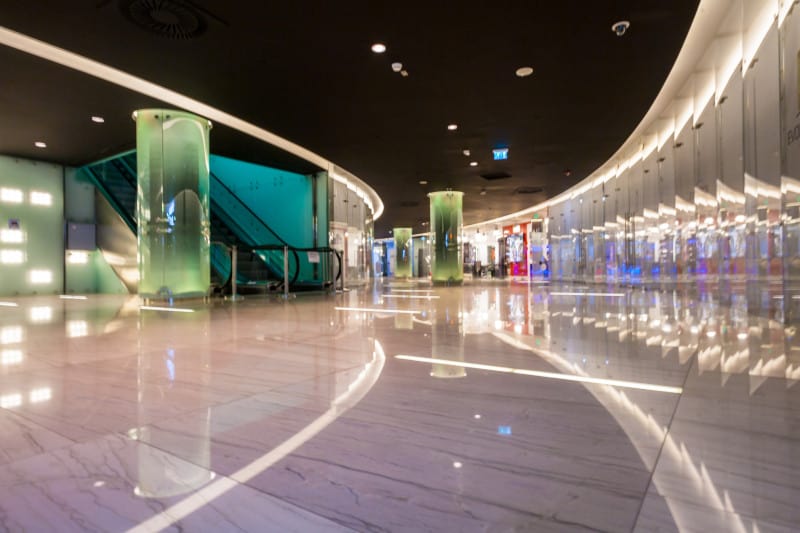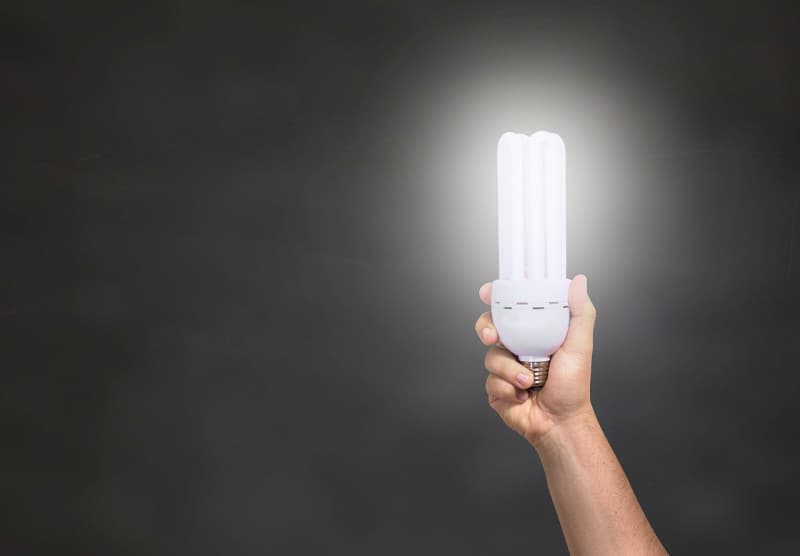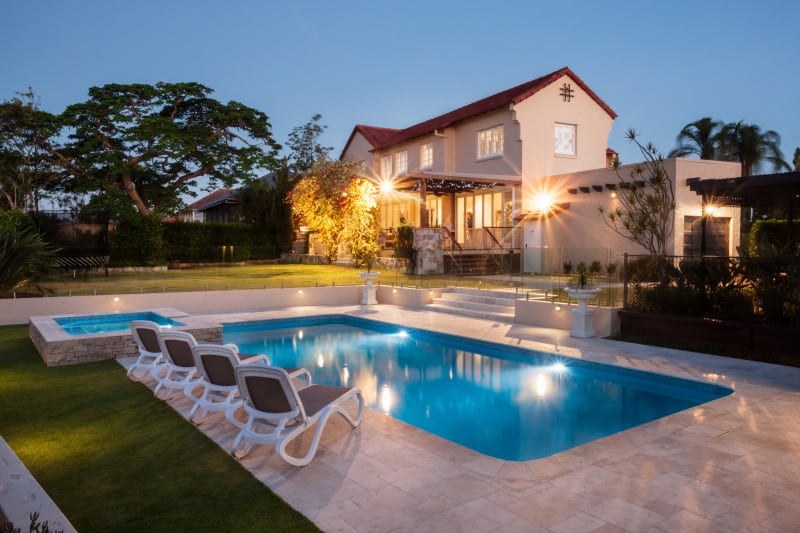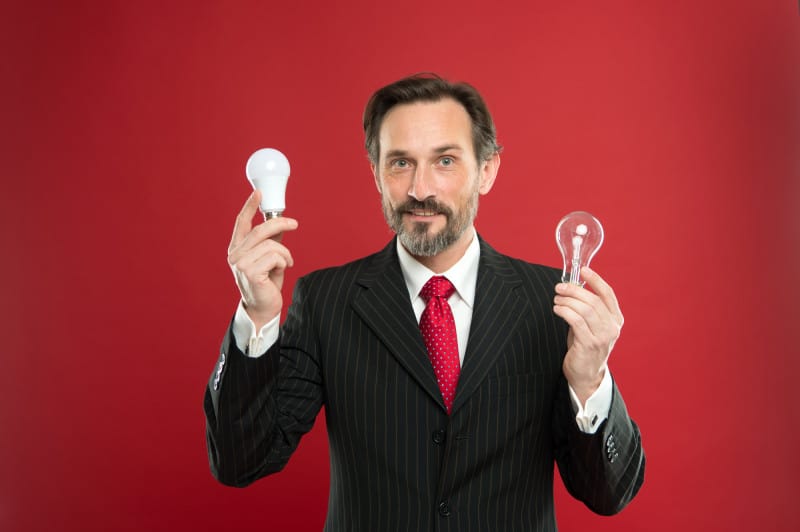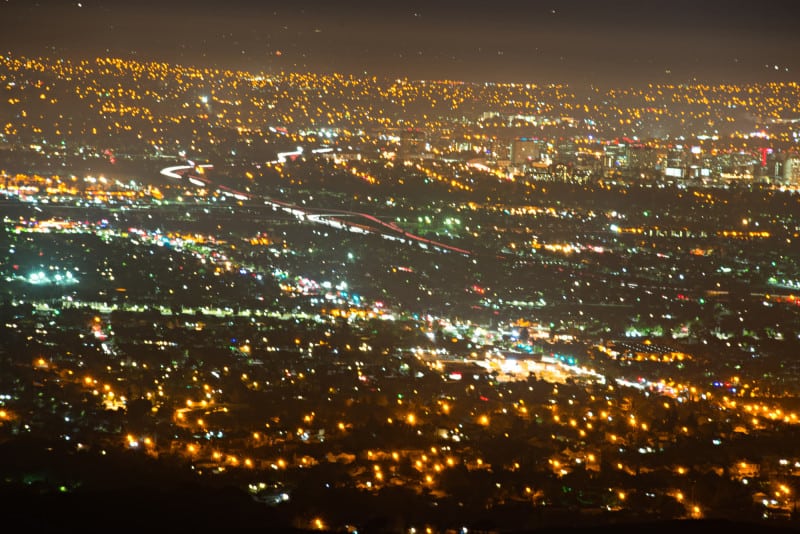In an era where sustainability and cost-effectiveness are paramount, businesses are continually seeking ways to optimize their operations and reduce overheads.
One such area of focus is lighting.
Effective lighting is essential for any business – it impacts everything from the aesthetics of a space to the productivity of employees.
Yet, it’s also one of the most significant contributors to energy consumption.
This article explores various energy-saving lighting recommendations for businesses, from LED and CFL bulbs to halogen bulbs, motion sensors, and automated lighting systems.
Each solution comes with its unique advantages, energy efficiency levels, and potential applications, helping business owners and managers choose the best fit for their specific needs.
LED Lighting Solutions
Imagine walking into your business space one morning, flipping the switch, and suddenly you’re saving money.
Sounds fantastic, doesn’t it?
Well, that’s the kind of benefit LED (Light Emitting Diode) lighting solutions can offer to your business.
LED lights are an energy-saving superstar!
According to the U.S. Department of Energy, they use up to 75% less energy than traditional incandescent lighting, and last 25 times longer.
That’s not just good news for your electricity bill but also for our planet.
These numbers aren’t just picked out of thin air – multiple sources, including the Energy Information Administration and the International Energy Agency, confirm this.
Now, let’s get a little technical but don’t worry, it’s simple stuff.
LED lights work differently from traditional bulbs. Instead of heating a filament (like how your toaster works), they pass electricity through a semiconductor (which is kind of like a super-efficient electrical gate).
This process is called electroluminescence, and it’s why LEDs are so much cooler – literally, they generate less heat – and more efficient than other lights.
To put it into perspective, imagine you’re running a restaurant. Replacing the old incandescent or halogen bulbs in the kitchen, dining area, and outdoor signage with LEDs could result in massive energy savings.
In the end, LED lighting solutions are not just about energy efficiency. They’re about creating a better, brighter, and more sustainable future for your business.
CFL Bulbs
Now, let’s switch gears a bit and chat about another kind of light bulb – the CFL, or Compact Fluorescent Lamp.
If you’ve ever seen a light bulb that looks like a twisted soft-serve ice cream cone, then you’ve seen a CFL bulb.
According to the U.S. Department of Energy, CFLs are about four times more efficient and last up to 10 times longer than incandescent bulbs.
This means if you replace a 60-watt incandescent bulb with a 15-watt CFL, you’ll get the same amount of light but use much less energy.
And Energy Star, a program run by the U.S. Environmental Protection Agency, verifies these energy-saving benefits.
CFLs work a bit differently than other types of bulbs.
They’re filled with a bit of mercury (don’t worry, it’s safe as long as the bulb isn’t broken) and a gas.
When the electricity hits the mercury, it gets excited – not like party excited, but scientifically excited – and releases ultraviolet light.
The UV light then interacts with a special coating on the inside of the bulb, transforming it into the light we can see.
Imagine you run a small retail store and you have a display window out front. You could use CFLs to light your window display.
Not only would you use less energy, but because CFLs don’t produce as much heat as incandescent bulbs, your displays wouldn’t get all hot and uncomfortable. That could be a real game-changer in the summer months!
In short, while they might not be quite as efficient as LEDs, CFLs are still a major step up from traditional incandescent bulbs.
By choosing CFLs, you’re choosing to save energy, money, and the environment.
Halogen Bulbs
Alright, let’s shed some light on another type of bulb, the halogen bulb.
You’ve probably seen these guys around, especially in car headlights, security lights, or even in your desk lamp.
They’re known for their bright, white light, but are they energy efficient? Let’s find out.
Here’s the lowdown: halogen bulbs are a type of incandescent light, meaning they produce light by heating a filament until it glows.
The twist here is that halogen bulbs are filled with, you guessed it, halogen gas. This gas does a neat little trick; it helps redeposit the evaporated tungsten back onto the filament, allowing it to glow brighter and last longer than traditional incandescent bulbs.
This is backed by the U.S. Department of Energy, the Energy Saving Trust, and the International Energy Agency.
But how do they stack up in terms of energy efficiency?
Well, they’re definitely more efficient than traditional incandescent bulbs – about 25% more according to Energy Star.
But, they still don’t hold a candle (or should we say bulb?) to LEDs or CFLs in the energy-saving department.
Let’s say you run a jewelry store. The bright, white light of halogen bulbs can make your diamonds and gemstones really sparkle.
But, keep in mind that these bulbs generate a lot of heat and use more energy than LEDs or CFLs so they might not be the best choice if you’re trying to cut down on your energy bills or keep your store cool.
Energy-Saving Motion Sensors
Now, let’s move (pun intended) to a different energy-saving lighting solution: motion sensors.
You’ve likely come across these in public restrooms, office buildings, or even in some homes.
They’re the things that magically turn on the lights when you walk into a room and then turn them off again when you leave.
How do they help save energy?
It’s pretty straightforward.
According to the U.S. Department of Energy, the Lawrence Berkeley National Laboratory, and Energy Star, motion sensors can reduce energy use by up to 30% by ensuring lights are only on when they’re needed.
Motion sensors work by detecting movement within a certain range.
Once movement stops for a set amount of time, they automatically switch off the lights.
This is especially useful in areas where people often forget to turn off lights, like conference rooms, restrooms, or storage areas.
Imagine you run a large office. By installing motion sensors, you won’t have to worry about employees leaving the lights on in unused rooms.
And let’s be honest, we’ve all had that one coworker who always forgets to flip the switch on their way out. With motion sensors, that’s no longer an issue.
You’ll save energy, reduce your electricity bill, and never have to nag about lights being left on again!
Automated Lighting Systems
When it comes to energy-saving lighting, automated lighting systems provide businesses with an opportunity to save even more money.
These systems are designed to adjust lights based on the amount of natural light available in a room, reducing or increasing the amount of artificial lighting provided.
This is known as daylight harvesting and can be used in combination with other energy-saving strategies.
Here are just a few of the advantages that automated lighting systems offer:
- Increased Energy Efficiency: Automated lighting systems help businesses reduce their overall energy costs by only providing artificial light when necessary.
- Improved Productivity: By providing a bright and consistent level of light throughout the day, employees can work more efficiently and productively.
- Reduced Maintenance Costs: Automated lighting systems require less maintenance than traditional lighting fixtures, which helps keep operational costs down.
- Natural Lighting: Automated lighting systems enable businesses to make use of natural light by dimming or turning off artificial lights when enough sunlight is available.
- Easier Installation: Installing automated lighting systems requires minimal wiring compared to traditional fixtures, making it easier and cheaper to install.
These automated lighting systems offer many benefits for businesses looking for ways to save money on their energy bills while still providing an adequate level of illumination.
With this technology, businesses can enjoy all the benefits of natural and artificial lighting without compromising on quality or efficiency.
Conclusion
The choice of lighting can significantly impact a business’s energy consumption, operational costs, and sustainability efforts.
From the highly efficient LED and CFL bulbs to the advanced motion sensors and automated lighting systems, various energy-saving options cater to different needs and environments.
While LEDs provide the highest energy efficiency, CFLs and halogen bulbs offer viable alternatives in certain situations.
On the other hand, motion sensors and automated lighting systems add an extra layer of intelligence to your lighting, reducing waste and optimizing energy use.
As businesses continue to navigate the path of sustainability, these lighting solutions provide a brighter, more efficient, and sustainable future.
The right lighting choice can lead to substantial energy savings, a reduced carbon footprint, and ultimately, a more successful and responsible business.

